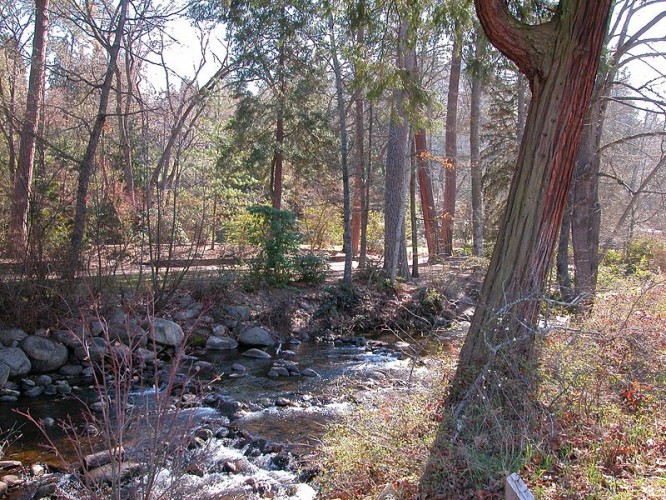During the late 1800s and early 1900s, public parks were beginning to really catch on in the United States. Teddy Roosevelt at the turn of the century began to intensely focus on wildlife preservation and national/public park initiatives. Millions of acres of federal land were designated as national parks and protected lands. Additionally, public parks began to spring up all over the nation including Central Park in New York. In 1892, even the city of Ashland, though small and nestled within the wild mountains of the northwest, decided to jump into the public parks initiative. That year Ashland allotted eight acres that would eventually become the large and beautiful park we all now know as Lithia Park.
eight acres that would eventually become the large and beautiful park we all now know as Lithia Park.
The park acquired its name when the water that ran through its streams was discovered to be ‘lithia water’. This water is special because it has an extraordinarily high concentration of Lithium Oxide (Li2O). The water itself is thought to be very healthful and has become a staple of the city.
Though nowadays Lithia Park is about 93 acres and one of the most beautiful parks in the country, it was not always that way. Only in 1908 and after the discovery of mineral waters did concern for the park’s well-being really begin to grow. That year the Ashland city council amended its city charter and established an elected park commission. The new governmental body was charged with the general improvement and maintenance of Lithia Park. In addition to this new commission, the amendment also set aside all city land that bordered the Ashland Creek to be used as park space. Now Lithia Park was growing, and people were beginning to care.
Tourism was a main driver of the park’s improvement. In the early twentieth century, the only efficient mode of travel was railroad. At the time, Ashland was the only stop along the only railway route from San Francisco to Portland; needless to say, the town became a tourist hotspot. By the 1910s, tourism and wealthy landowners made up a majority of the city’s profits. With the city attracting so much attention and publicity, renewed efforts were made to construct and beautify local tourist attractions, such as the park. Unfortunately, the local flour mill, which sat in the area that now makes up the park’s entrance, had become worn down and ugly since its creation in the 1850s. This eyesore was a thorn in the park commission’s side. They voted to demolish it and turn it into a grand park entrance. The result was the lovely open green area and the many benches that now jubilantly invite guests into the park’s boundaries.
Throughout the remainder of the 1900s, the park grew in both beauty and land size. In 1910 the first lower duck pond was built. Soon after, new and more modern features such as a Japanese garden, a second duck pond, a formal rose garden, groves of sycamore trees and a number of secluded spots were added. Tree and foliage plantings began naturalistic. Trees such as native alders, oaks, conifers and madrones were incorporated. Later other plants were chosen to decorate the land such as willows, maples, sycamores, and numerous ornamental varieties. They were selected for hardiness, form and color in an effort to improve the overall beauty of the park.
From that point on, plans for the public park were going splendidly. It wasn’t until the late twentieth century that things began to go awry. In 1974, a large flood devastated the park and left it in serious disrepair. Ashlanders voted to divert increased funds to the park and the park commission in order to pay for the repairs. The town was not about to let their prize local attraction die. Unfortunately, in 1997, a subsequent flood again plundered Lithia. This time, the town voted to fund public works to construct precautions in order to prevent similar disasters from ever happening again. This included newer and better bridges as well as improvements to the park’s land. The consequence of this increased funding was the creation and permanent establishment of the vibrant and colorful Lithia Park that gives the town pride today.



